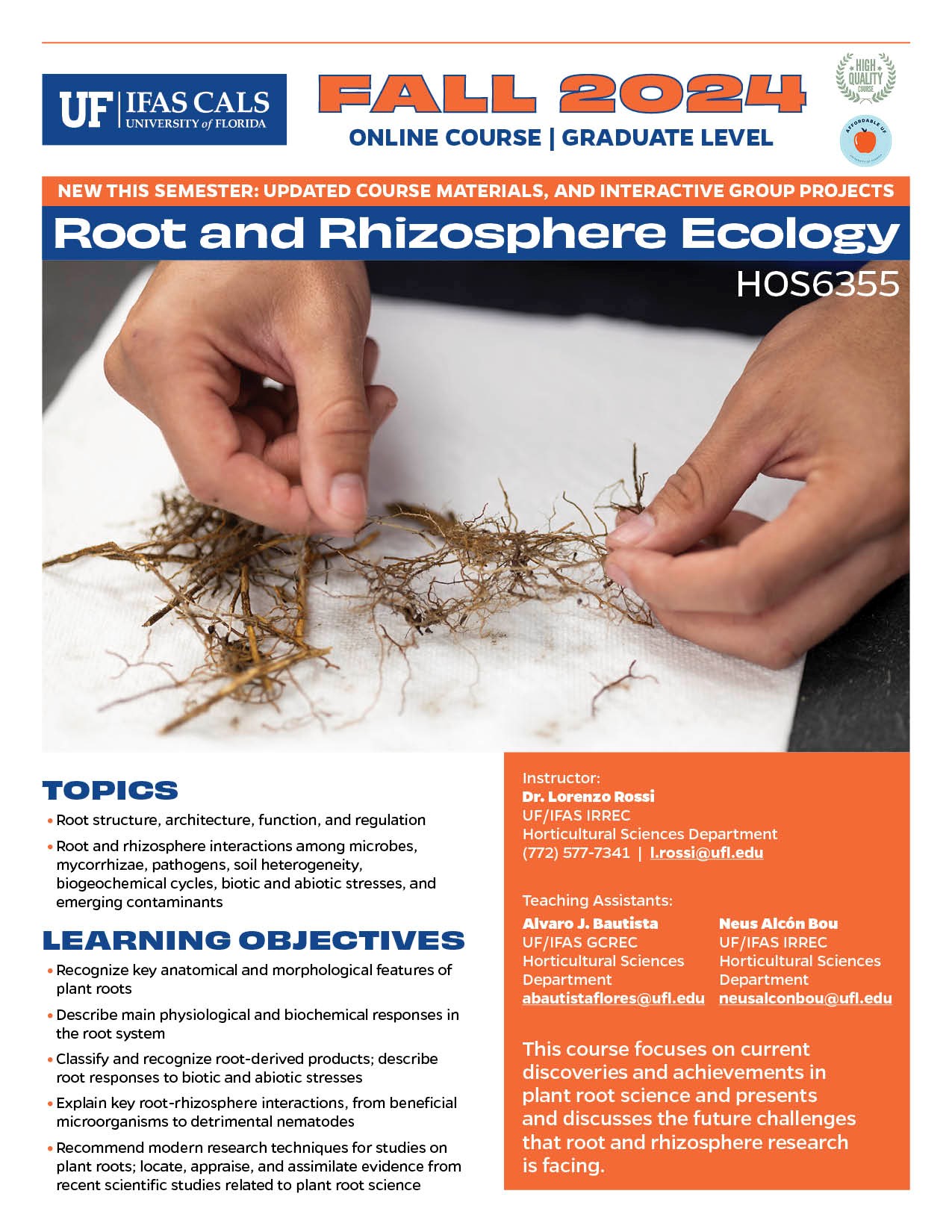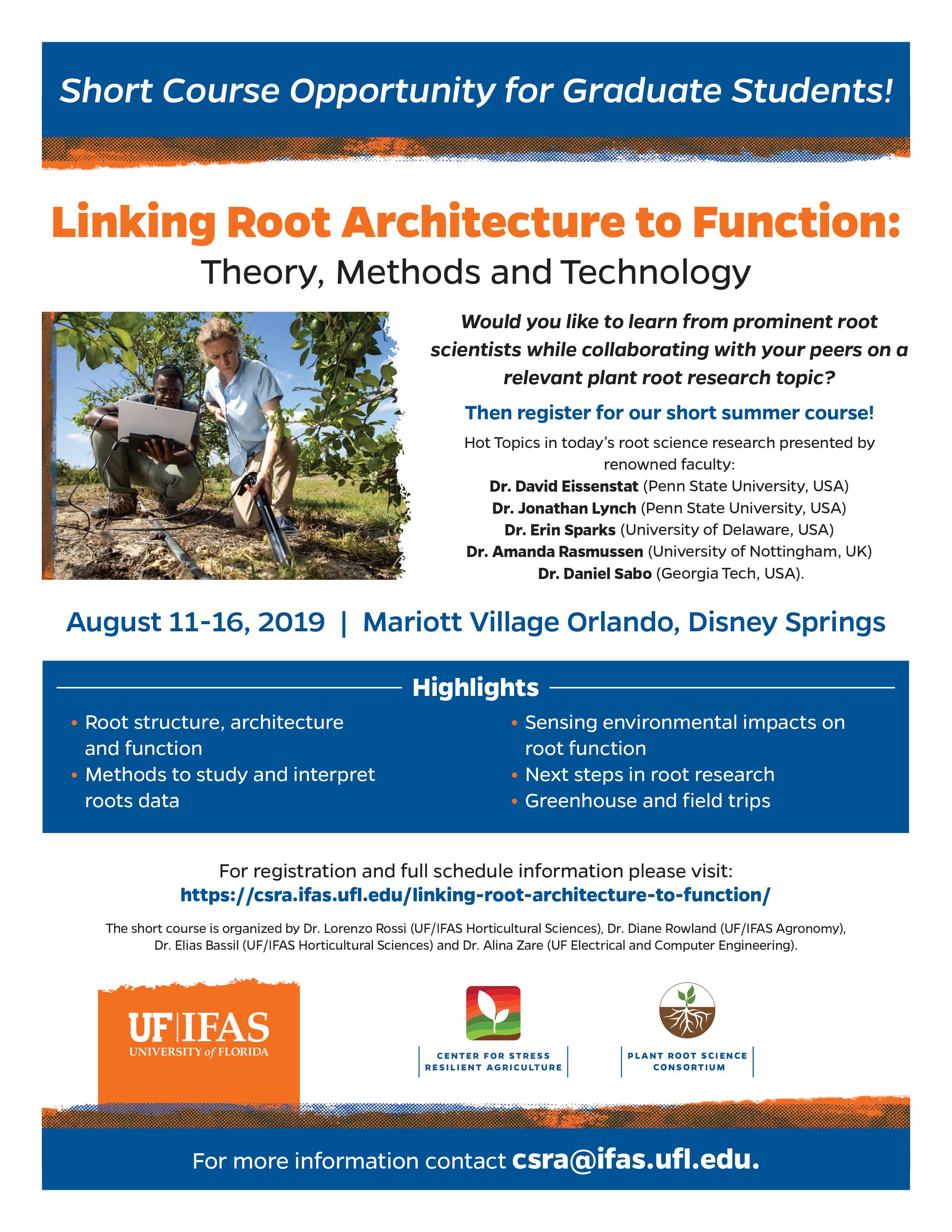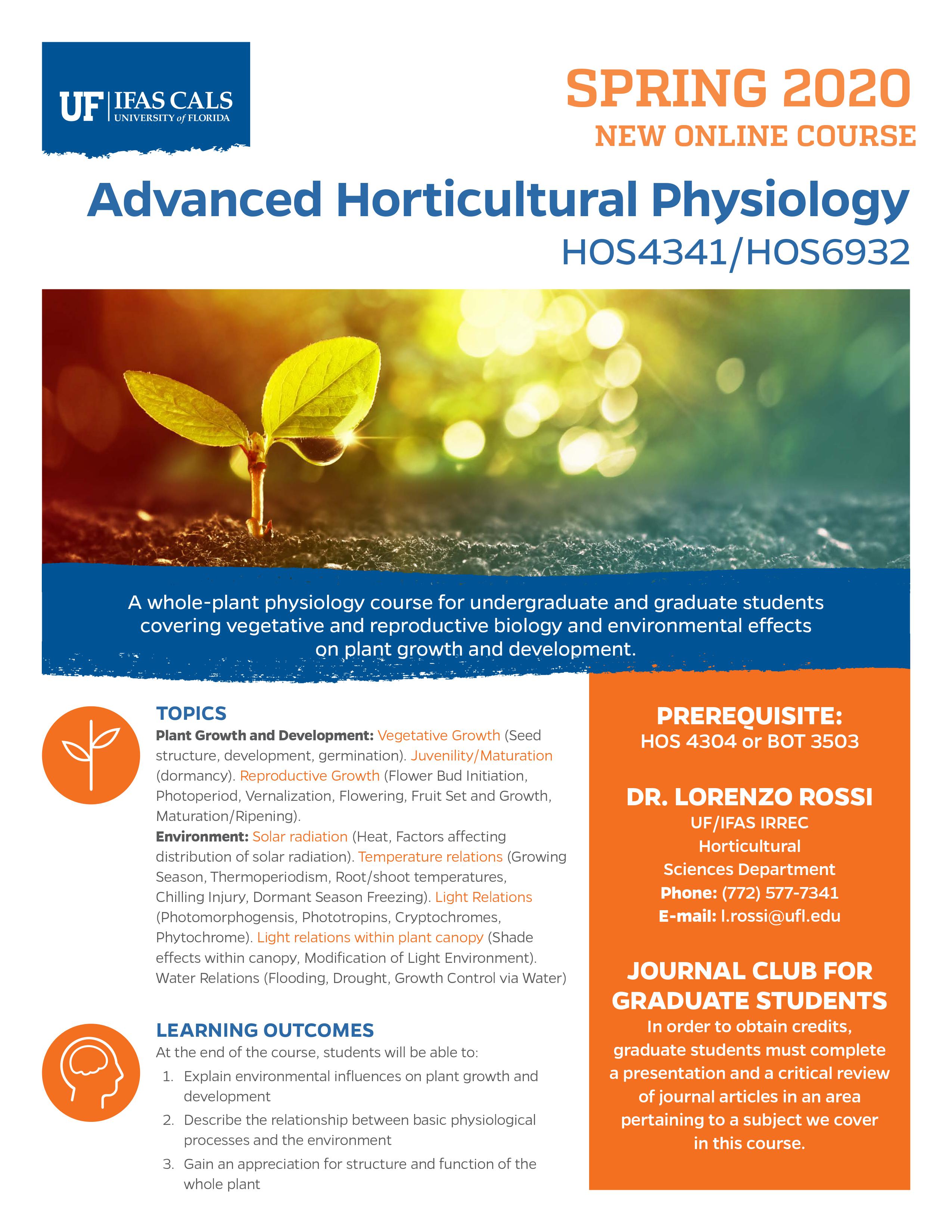TEACHING
Our teaching program expands the Horticultural Science Department’s offerings and cover root and rhizosphere ecology, advanced horticultural physiology, and specific summer courses on root structure and function.
Our teaching program expands the Horticultural Science Department’s offerings and cover root and rhizosphere ecology, advanced horticultural physiology, and specific summer courses on root structure and function.
The aim of this course is to provide a complete view of the rhizosphere and its unique functioning that implies numerous strong and complex interactions among plant roots, soil constituents, and microorganisms. Furthermore, the course not only aims to address current knowledge and achievements but also outlines the future challenges that confront rhizosphere studies. Topics incorporate how roots and the rhizosphere respond to different environments, including multiple interactions among soils, plant roots, microbes, mycorrhizae, and fauna, soil heterogeneity, biogeochemical cycles, abiotic stresses, and emerging contaminants.
BOT2010 or BSC2010
This is an advanced course that examines the interactions between the plant root apparatus and the environment. To be successful in this course, students should have a general knowledge of biology, botany, microbiology, and soil chemistry.

This is a summer course for graduate students. The central focus of this course will include an exploration of new techniques that couple studies of root system architecture and function, hands-on experience with some of these techniques, and the new approaches to delve deeper into the analysis of the resulting data, from modeling to machine learning techniques.

This is a whole-plant physiology course for undergraduate students covering vegetative and reproductive biology and environmental effects on plant growth and development.
HOS4304 or BOT3503
This is an advanced course which examines the interactions between plant physiology the environment. To be successful, students should have a general knowledge of biology, botany, microbiology, and soil chemistry.
